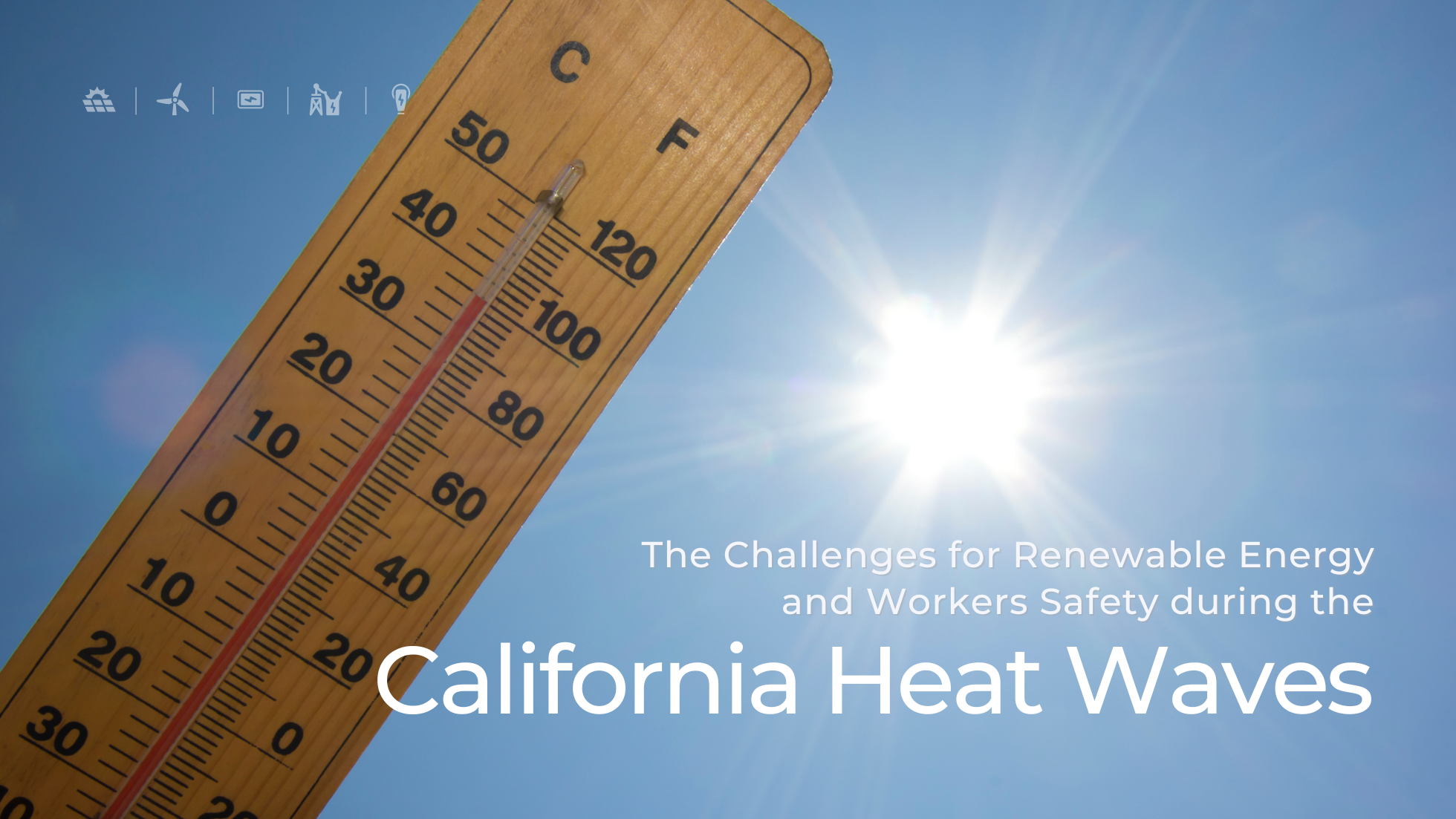Constructing Data Centers that Power Artificial Intelligence (AI) Learn More
Tackling California’s Heat Waves with Renewable Energy Solutions

California is no stranger to heat waves, but recent trends indicate that these extreme weather events are becoming more frequent and severe. The state’s latest heat waves have pushed temperatures to unprecedented highs, straining the energy grid and posing significant challenges to infrastructure, public health, and the environment.
High temperatures lead to a surge in electricity demand, primarily due to increased air conditioning use. This demand often peaks in the afternoon, when solar energy generation is also at its highest. However, the current energy grid, heavily reliant on fossil fuels, struggles to keep up, leading to rolling blackouts and increased greenhouse gas emissions.
Extreme heat is expected to set new records along the U.S. West Coast, affecting millions under a heat dome that also spans Arizona and Nevada. California has seen a rise in its annual mean temperatures of about 2.5 degrees Fahrenheit since 1895, with the past eight years mostly being the hottest on record. Research attributes these extreme weather patterns to fossil fuel-driven climate change, which is likely to continue causing dangerous heat waves for years.
The burning of fossil fuels releases greenhouse gases, trapping more heat in the atmosphere and increasing both average and extreme temperatures. Additionally, the National Weather Service warns of heightened wildfire risks due to hot, dry, and windy conditions.
Is Utility-Scale Renewable Energy a Solution for Heat Waves?
Amidst California’s escalating heat waves, utility-scale renewable energy emerges as a pivotal solution. Harnessing the state’s abundant natural resources, utility-scale solar farms play a crucial role by capturing solar energy during peak demand periods. This not only alleviates strain on the grid but also significantly reduces harmful emissions, fostering a cleaner environment.
Wind energy complements solar power by offering a reliable, renewable source of electricity across different times and seasons. Strategically positioned wind farms in high-wind regions contribute to a diversified energy mix, thereby enhancing grid stability and resilience during periods of heightened demand.
Energy Intermittency and Grid Stress
Addressing the intermittency of solar and wind energy, advanced energy storage solutions play a critical role. Utility-scale battery systems store surplus energy generated during peak production times. This stored energy is then released during peak demand, ensuring a steady and reliable power supply while reducing dependency on fossil fuel-powered peaking plants.
The tools used to cope with heat are also stressed by it. Power plants, which provide electricity for everything from fridges to air conditioners, need to be cooled, and they become less efficient as the weather warms. Power lines have lower capacities under extreme heat, and hardware like transformers experience more failures. If enough stress builds up, the power grid can collapse just when people need cooling the most. Increasing energy efficiency can relieve stress on the power grid. Adding power sources that don’t require active cooling, like wind and solar, can boost capacity without adding greenhouse gas emissions.
Balancing Today’s Safety with Tomorrow’s Sustainability
California’s heat waves pose urgent challenges, straining the energy grid and heightening environmental concerns. Through renewable energy solutions like utility-scale solar and wind power, alongside advanced storage systems, we can mitigate these impacts and pave the way towards a sustainable future. These measures enhance energy security, reduce environmental footprint, and strengthen resilience against climate challenges.
While building this sustainable future, we prioritize the safety of our field workers facing increased risks during extreme heat. At BEI Construction, our comprehensive heat injury and illness prevention program ensures they have the resources needed for safety, including hydration, shaded rest areas, and scheduled breaks. This proactive approach reflects our commitment to a safe working environment and the well-being of our employees.
Investing in renewable energy and worker safety not only addresses current challenges posed by heat waves but also lays a foundation for a resilient and sustainable California today and tomorrow.